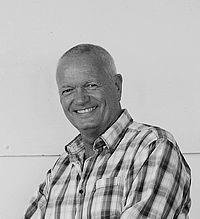- Teaching
- Urban Design Projects
- April 2, 2015
Urban Design Project II (un)stable. A Space of Possibiliy: Large Housing Estate 2015
As part of the UD's theme “(in)stability,” we focused on the creation and the present situation of large (residential) settlements, based on the example of Rostock. As a condition of any design intervention, we first devised a procedure that allowed us to recognize, describe, and conceptualize the dynamic and unstable complexity of relationships. While we focused in the winter semester on the analysis, now independent projects will be developed from or with these processes and conditions. Based on the findings of paradigms, typologies, actors, and processes, which produced and reproduce the (in)stabile (dis)organization of large housing estate areas in Rostock, we will look for possible scenarios, interventions, links, or transformations in order to develop and build on options for action. Against the background of changing housing practices, work and/or activity profiles, changing mobility, demographic change and migration, or considering environmental aspects such as climate and environment, food and resources, the question arises as to what concept of city and urbanity can be projected into a possible future? How to deal with (in)stable processes and uncertainties, if these are part of the basis for action? What human and non-human actors could be mobilized and what new links might be brought into play? The central question is what needs to be re-gathered and how to relate these elements, and what is missing? In what way can (large housing) estates be considered part of the city in the future, and how might this future city be created? The projects can be developed from a research-based and/or design/planning perspective.
10 CP

Source: Michaelis/Pohl/Schülke
contributors

Prof. Dr. Ingrid Breckner
Professor, Urban and Regional Sociology

Prof. Dr. habil. Christopher Dell
Professor, UFoK, OT and RFoP

Prof. Dipl. Ing. Bernd Kniess
Professor, Urban Design

Prof. Dr. sc. techn. ETH Michael Koch
Urban Design and District Planning
M.Sc. Benjamin Pohl
Academic staff

M.Arch. Maja Momic
Ph.D. Candidate
Dipl.-Ing. M.Sc. Rainer Johann
Moritz Schneider
2014/2015
(In)stabil

Wohnen zwischen Plan und Wirklichkeit
Warmes Wasser aus der Wand, Eigenes WC, Badewanne und Balkon waren die großen Freuden der Erstbewohner vieler Großwohnsiedlungen der Nachkriegsmoderne. Um Rostock wuchsen diese gewaltigen Großsiedlungen über nahezu vier Jahrzehnte buchstäblich auf der »grünen Wiese« und ragen inzwischen aus einem Wald von Abstandsgrün, welcher von endlos breiten Magistralen durch- schnitten ist. Straßen und …